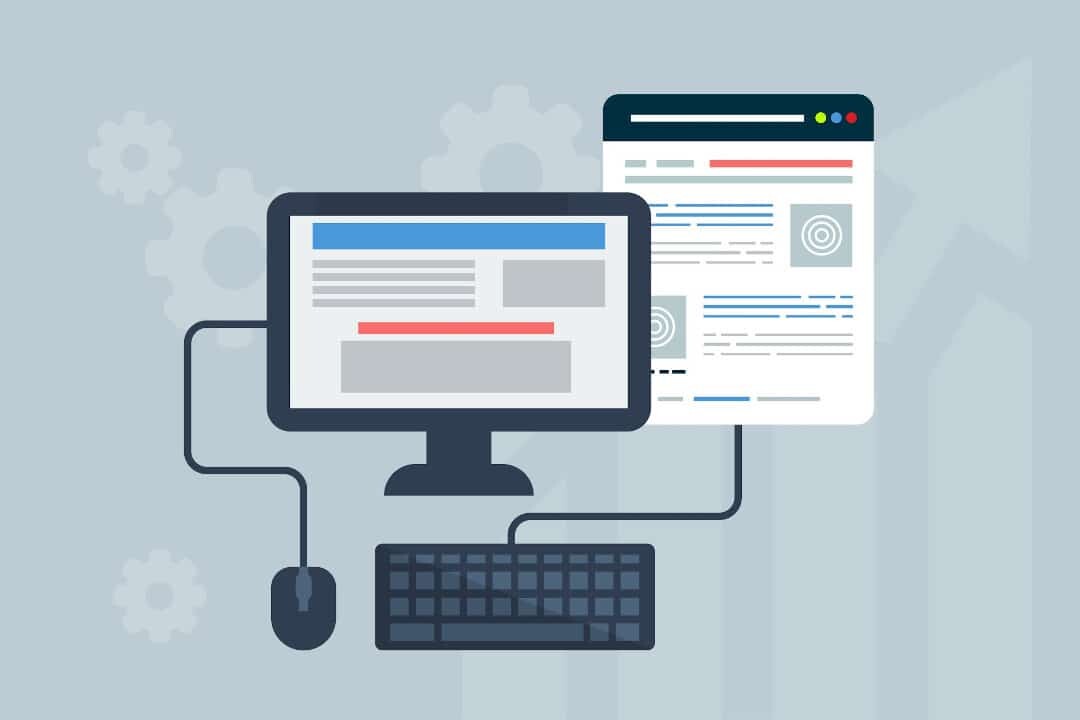Bad Website Design: Does your website fail to attract traffic? Do you get visitors but no conversions?
Failing to hit your goals indicates a problem with your content and possibly a bad website design. People won’t stick around on websites with design problems and will look for answers elsewhere.
But how do you identify the issues plaguing your site?
Don’t worry; we’ve got a list ready for you. Below is a list of nine mistakes you’re probably making:
1. Bad Website Design is a Slow Website
Poorly designed websites may look good but take too long to load. If your pages take more than 3 seconds to load, you’re losing out on nearly half of your total traffic. That means you lose a large number of potential conversions.
You can fix this by optimizing your site. Run an audit and start making things faster. Use tools like WP Smush to compress images and remove unnecessary bloat, like Flash animation and background music.
2. You’re Not Mobile-Friendly
Did you know that about 51% of people access the Internet primarily on a mobile phone? Even Google adjusted, launching its mobile-first system. Mobile has now taken over desktop usage, and your site needs to move with this ongoing trend.
No, this doesn’t mean you need to design only for mobile users. Instead, focus on responsive web design. Responsive web design ensures your site looks and navigates fine regardless of the user’s screen size.
Going with a responsive design isn’t only meant to modernize your site. This fix also boosts your SEO efforts too.
3. Site Still Uses Flash
Bad websites, especially those still using design philosophies from the 2000s, still feature Flash. Unfortunately, Flash is a significant mistake because Flash consumes a lot of bandwidth.
Flash animation significantly slows your site and does nothing for your visitors. It simply looks fancy, but it forces visitors to wait for it to finish before they can further navigate your site.
By the end of 2020, Google’s Chrome browser will no longer run Flash animation. That era is gone. If you still feature Flash, it’s time to get rid of it and streamline your pages.
4. Font and Typeface
Want to identify a bad website design at first glance? Check out the text. If you have to squint to read a blog post or title at arm’s length, that site already failed.
Fix this mistake by redoing all the font and typeface. Prioritize readability. Readability is a case where function before form truly matters.
Also, make it a habit to practice consistency.
Don’t shift to different font types. Instead, you should only feature changes for thematic purposes, such as featuring horror-themed font for a title when your blog post is about Halloween.
5. Having Splash Pages are Bad Website Design
Let’s get one thing clear: splash pages achieve nothing and are relics of a bygone era. They rose in popularity about a decade ago but quickly faded when people realized the main problems associated with splash pages. Splash pages create an extra hurdle to the main content, slowing down websites.
Splash pages often run on Flash animation. As mentioned, Flash consumes a lot of bandwidth and slows down your pages. That’s already a big reason to get rid of them.
More importantly, they only serve as another gateway to the site’s main content. Visitors might appreciate the pretty animation, but to get to your main landing page, they still have to click on another button. So you’re adding effort on their end.
6. Social Media Portals at the Top
Social media portals are essential. You want site visitors to check your Facebook page or follow you on Twitter. After all, this helps keep your leads and promotes further engagement.
However, it would help if you didn’t put social media icons at the top of your site. The problem here is that visitors see these portals all the time. This exposure increases the likelihood of them moving away from your website.
Once a visitor leaves your site to check out a social media platform, there’s a low chance they’ll come back. Instead, most users get stuck in a rabbit hole, watching videos or clicking on more social media posts before realizing how much time they spent.
7. Difficult to Navigate
If you want to identify a website mistake quickly, bring in someone who has nothing to do with your site. Ask this test user if they can find the Blog section, About section, and Contact page without your help. If it takes them too long, there’s something wrong with your site design.
Navigation is essential when considering web design and user experience (UX). Your site shouldn’t hide menus within other menus. It would help if you didn’t put essential links, such as the links to your contact page, at the bottom of your site and in small text.
8. Too Many Broken Links is Bad Website Design
Get a tool to audit your site and mark broken links. You don’t want people clicking on a link, hoping to read a blog post or purchase something, only to hit a 404 error. This error disappoints visitors and causes them to leave, increasing bounce rates.
You don’t have to run an audit like this all the time. But, if possible, conduct a quick audit and check for fixes at least every three weeks. This audit ensures all your new posts and old content still function.
9. Links Open New Windows
This mistake revolves around two things: user experience and bounce rates.
If links and menu buttons on your site open a new window, you’re ruining the visitor’s experience. They can’t go back to the previous page since it’s on a different window. Also, with too many windows open, you create opportunities for visitors to leave.
Focus on keeping visitors on the same window. Links should open on the same tab, ensuring people can return quickly. Always keep the main menu options visible so that users don’t have to navigate to a specific page to access the content they want.
Avoid These Bad Website Design Mistakes!
Run an audit and check if you’re committing any of these website design mistakes. Don’t panic if it looks like your site is in trouble. We’re here to help and are web designers near me.
We have a ton of additional guides to help you improve. Feel free to check out our other tips and tricks, like this post listing seven principles of web design basics.







